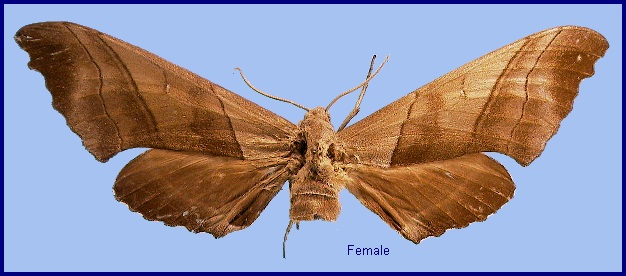
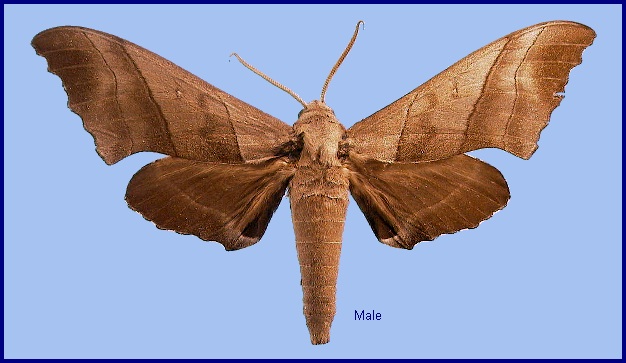
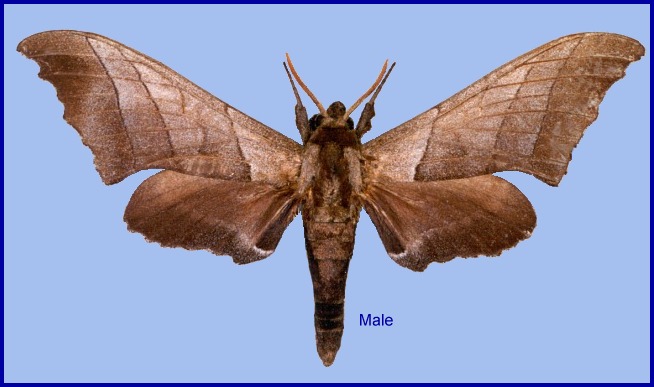


Polyptychus trilineatus chinensis Rothschild & Jordan, 1903, Novit. zool. 9 (suppl.): 239. Type locality: China: "probably Yangtse-kiang Region".
Synonym. Polyptychus draconis Rothschild & Jordan, 1916, Novit. zool. 23: 115. Type locality: [China,] "Thibet" [west Yunnan/Sichuan].
Synonym. Polyptychus draconis draconoides Mell, 1935, Mitt. zool. Mus. Berl. 20: 348. Type locality: China, Chekiang [Zhejiang], west Tien mo shan [Tianmu Shan], near Lin, 30.1°N 119.4°E, 1500-1600m; China: south Hunan, Hengchow [Hengyang], <<900m>>.
Synonym. Polyptychus chinensis shaanxiensis Brechlin, 2008, Entomo-Satsphingia 1: 40. Type locality: China, Shaanxi, Tsinling Shan [Qingling Shan], Fopin.
Note. Polyptychus chinensis was originally proposed as a subspecies of Polyptychus trilineatus by Rothschild & Jordan, 1903. Raised to species status by Jordan, 1938, Novit. zool. 41: 127. Treated as a subspecies of Polyptychus trilineatus by d'Abrera [1987], Sphingidae Mundi: 68. Reinstated as a species by Kitching & Cadiou, 2000, Hawkmoths of the World: 63.
Note. All subspecies of Polyptychus chinensis were synonymized with the nominotypical subspecies by Melichar, Haxaire & Manjunatha, 2021, European Ent. 13(1): 13.
[Further details on this species in Japan, as well as photos of many stages, can be found on Digital Moths of Japan.]
Wingspan: 92--112mm. Similar to Polyptychus dentatus (Cramer, 1777) in that the forewing submarginal line is not convex between veins M2 and Cu2, but forewings relatively broader and outer margin straighter.
In the female genitalia, eighth tergite (A8) a very large, deeply divided, irregularly notched and rugose plate, differing markedly from Polyptychus dentatus and Polyptychus trilineatus Moore, 1888. Lamella postvaginalis excavated to form a pair of rounded lobes.
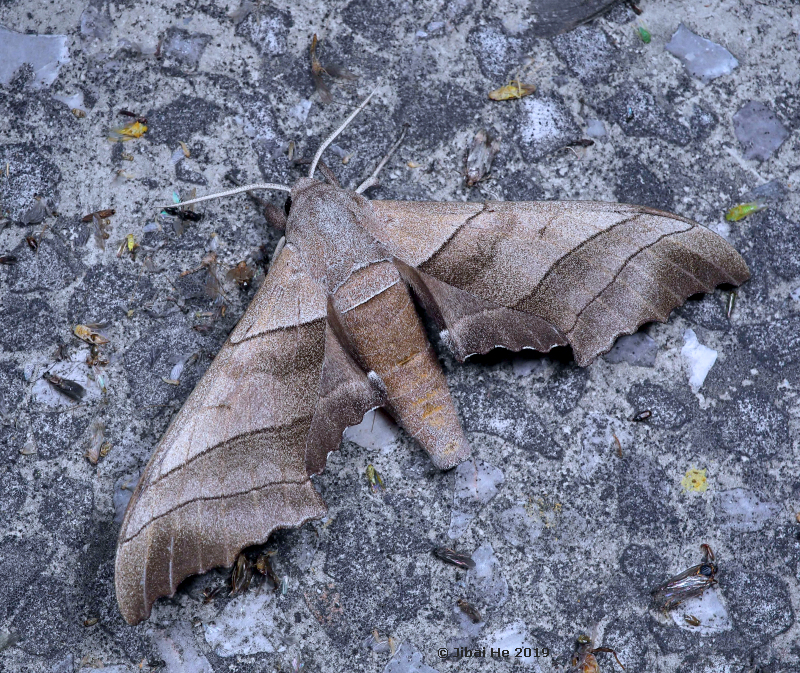
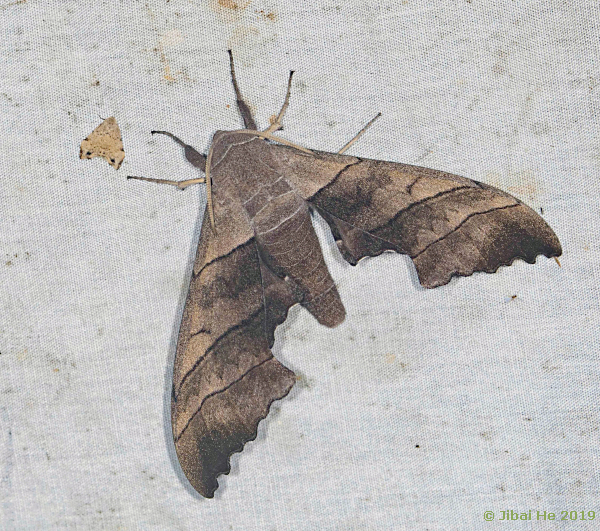
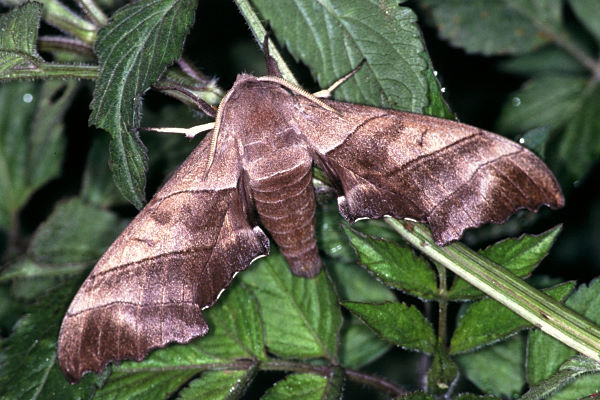
China: 11.iv (Baoshan, Yunnan); v-vi (Sichuan); 18.v-17.vii (Hunan); 4.vi-31.viii (Zhejiang); vii (Guangxi); 10.vi (Hubei); viii (Sichuan). Taiwan: iii-iv (Kaohsiung Hsien); iv (Hualien Hsien). Japan: 19.iv (Ryukyu Archipelago).
OVUM: Unrecorded.
LARVA:
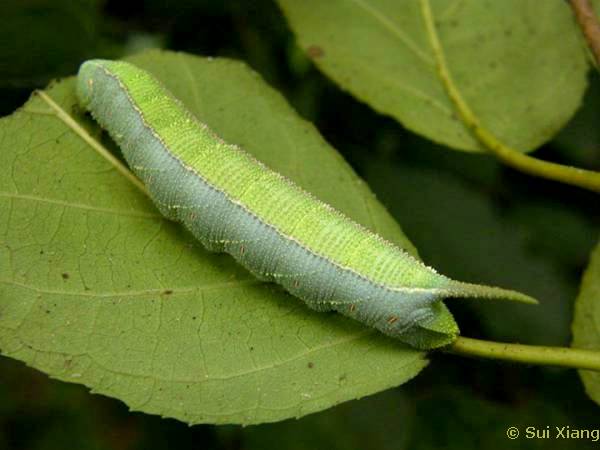
PUPA: Unrecorded.
Larval hostplants. On Taiwan, recorded from Ehretia dicksonii (Boraginaceae), a small tree (ShenHorn Yen, pers. comm. 2012). Also Cordia dichotoma and Ehretia acuminata, the latter in Yunnan (Mell, 1922b).
China: Henan (Mt. Niuxinduo, Luoyang, 1763m); Anhui (Mt. Huang Shan); Zhejiang (Tianmu Shan, nr. Lin'an, 1500-1600m); Hubei (Jiugongshan National Reserve, Xian'ning, 540m; Luotian, 1729m); Sichuan (Danba; Guan Xian; Kangding; Emei Shan, 960m); Chongqing (Simian Mountain National Scenic Resort); Yunnan (Weixi; Yanmen; Baoshan; Gaoligong Shan); Xizang/Tibet; Guizhou; Hunan (Hengyang, 900m; Heng Shan, 900m); Fujian; Guangxi.
Taiwan: Kaohsiung Hsien (Shanping, 640m); Tainan City (Lotus Park, Baihe District, 41m); Nantou Hsien (Lushan Spa).
Japan: Ryukyu Archipelago (Amami-Oshima).
Southern, central and eastern China, Taiwan and the southern Ryukyu Archipelago, Japan.
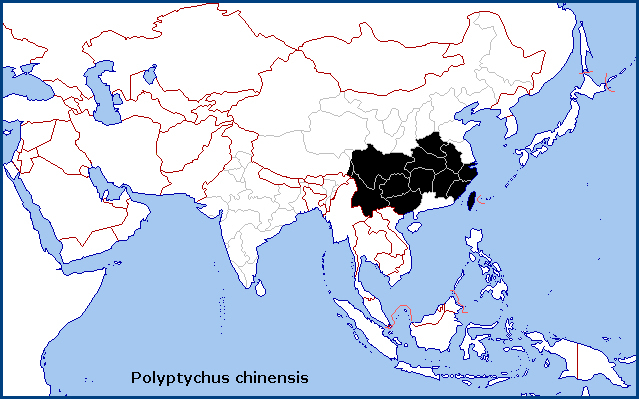
 Return to Sphingidae of the Eastern Palaearctic species list
Return to Sphingidae of the Eastern Palaearctic species list